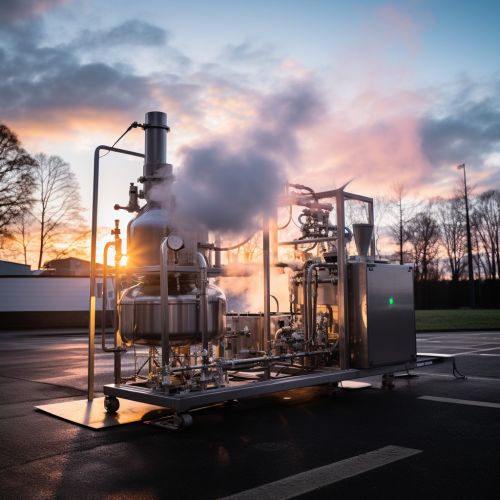Atmospheric Pressure Chemical Vapor Deposition
Introduction
Atmospheric Pressure Chemical Vapor Deposition (APCVD) is a chemical vapor deposition method that operates at atmospheric pressure. Unlike other deposition methods such as Low Pressure CVD and Plasma Enhanced CVD, APCVD does not require a vacuum environment. This makes the process more cost-effective and allows for the deposition of thin films on larger substrates.


Process
The APCVD process involves the reaction of volatile precursors in a gas phase at elevated temperatures, leading to the formation of a non-volatile solid thin film on a substrate. The precursors are often delivered to the reaction chamber via a carrier gas such as nitrogen or argon. The gas flow is controlled to ensure a uniform deposition on the substrate.
The reaction can be thermally activated or plasma-enhanced. In a thermally activated process, the substrate is heated to a temperature that facilitates the reaction. In a plasma-enhanced process, a plasma is used to increase the reactivity of the precursors.
Applications
APCVD is widely used in various industries due to its versatility and cost-effectiveness. Some of its applications include:
- Semiconductor industry: APCVD is used for the deposition of various materials such as silicon dioxide, silicon nitride, and polysilicon. These materials are used in the fabrication of integrated circuits and other semiconductor devices.
- Photovoltaic industry: In the photovoltaic industry, APCVD is used for the deposition of thin film solar cells. The process allows for the deposition of materials such as amorphous silicon, cadmium telluride, and copper indium gallium selenide.
- Glass industry: APCVD is used in the glass industry for the deposition of coatings on glass for various purposes such as energy efficiency and self-cleaning properties.
Advantages and Disadvantages
APCVD has several advantages over other deposition methods. These include:
- Cost-effectiveness: APCVD operates at atmospheric pressure, eliminating the need for expensive vacuum systems.
- Large area deposition: APCVD allows for the deposition of thin films on larger substrates, making it suitable for industrial applications.
- Versatility: APCVD can be used for the deposition of a wide range of materials.
However, APCVD also has some disadvantages:
- High temperature: The process often requires high temperatures, which can limit its use with certain materials and substrates.
- Control of film properties: Controlling the properties of the deposited film such as thickness and uniformity can be challenging.
Future Trends
Research is ongoing to improve the APCVD process and expand its applications. This includes the development of new precursors and reaction conditions to enable the deposition of new materials. There is also research into lowering the process temperatures to make APCVD compatible with more substrates.
